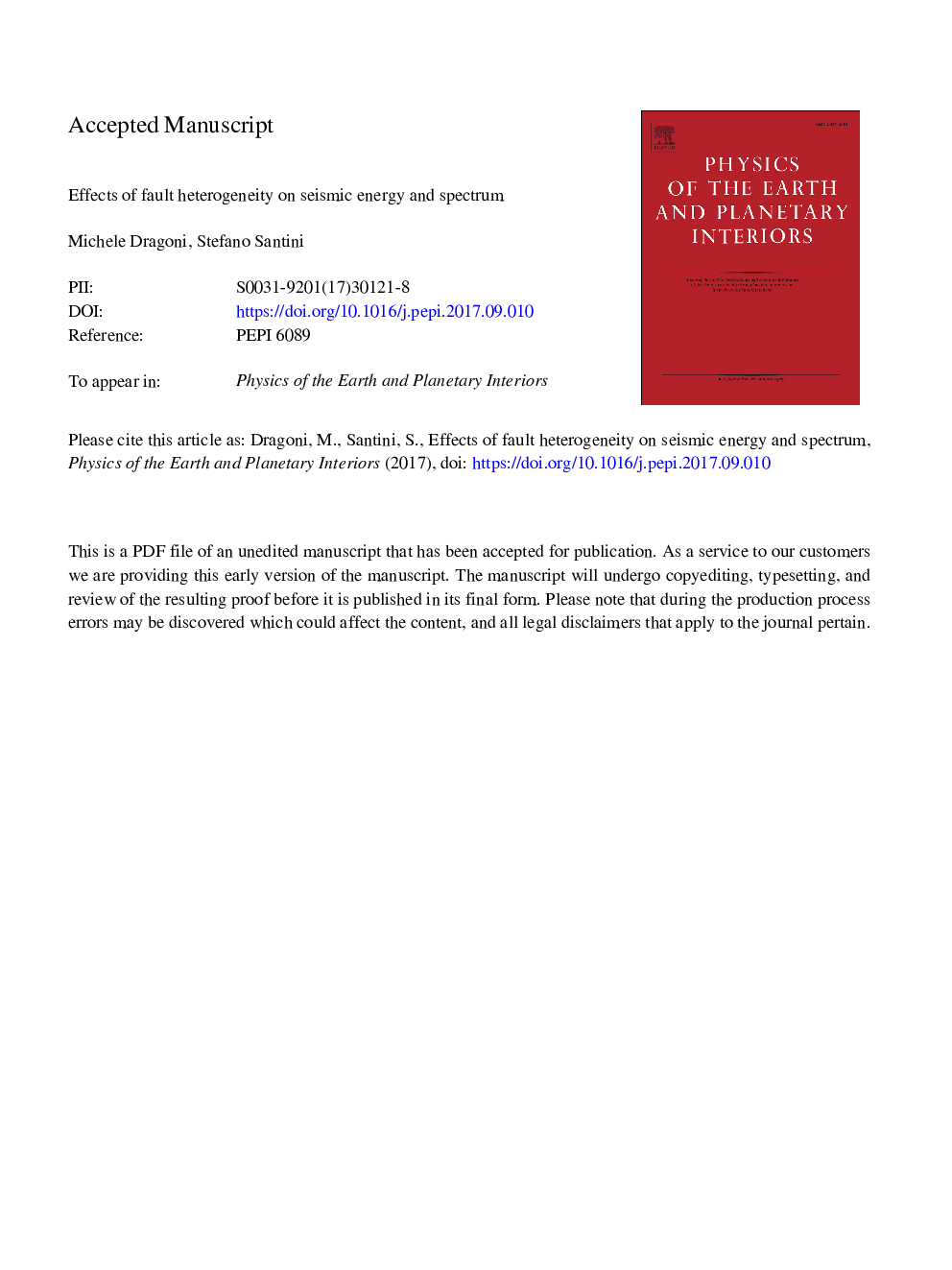| کد مقاله | کد نشریه | سال انتشار | مقاله انگلیسی | نسخه تمام متن |
|---|---|---|---|---|
| 8915770 | 1641467 | 2017 | 48 صفحه PDF | دانلود رایگان |
عنوان انگلیسی مقاله ISI
Effects of fault heterogeneity on seismic energy and spectrum
ترجمه فارسی عنوان
اثر ناهمگنی گسل در انرژی لرزه ای و طیف
دانلود مقاله + سفارش ترجمه
دانلود مقاله ISI انگلیسی
رایگان برای ایرانیان
کلمات کلیدی
لرزه ای تئوری، مکانیک خطا، سیستم های غیرخطی دینامیکی، مدل منبع لرزه ای، مدل های اسپرتی،
موضوعات مرتبط
مهندسی و علوم پایه
علوم زمین و سیارات
فیزیک زمین (ژئو فیزیک)
چکیده انگلیسی
We study the effects of friction heterogeneity on the dynamics of a seismogenic fault. To this aim, we consider a fault model containing two asperities with different static frictions and a rate-dependent dynamic friction. We consider the seismic events produced by the consecutive failure of the two asperities and study their properties as functions of the ratio between static frictions. In particular, we calculate the moment rate, the stress evolution during fault slip, the average stress drop, the partitioning of energy release, the seismic energy, the far-field waveforms and the spectrum of seismic waves. These quantities depend to various extent on the friction distribution on the fault. In particular, the stress distribution on the fault is always strongly heterogeneous at the beginning of the seismic event. Seismic energy and frictional heat decrease with increasing friction heterogeneity, while seismic efficiency is constant. We obtain an equation relating seismic efficiency to the parameters of the friction law, showing that the efficiency is maximum for smaller values of dynamic friction. The seismic spectrum depends on the friction distribution as to the positions and the values of the minima. However, under the model assumption that the slip durations are the same for both asperities, the corner frequency is independent of the friction distribution, but it depends on the friction law and on the coupling between asperities. The model provides a relation between the total radiated energy and the seismic moment that is consistent with the empirical relation between the two quantities. The fault model with one asperity is also considered as a particular case. The model is applied to the 1965 Rat Islands (Alaska) earthquake and shows the role of fault heterogeneity in controlling the spatial distribution of stress drop as well as the time dependence and the final amount of radiated energy.
ناشر
Database: Elsevier - ScienceDirect (ساینس دایرکت)
Journal: Physics of the Earth and Planetary Interiors - Volume 273, December 2017, Pages 11-22
Journal: Physics of the Earth and Planetary Interiors - Volume 273, December 2017, Pages 11-22
نویسندگان
Michele Dragoni, Stefano Santini,
